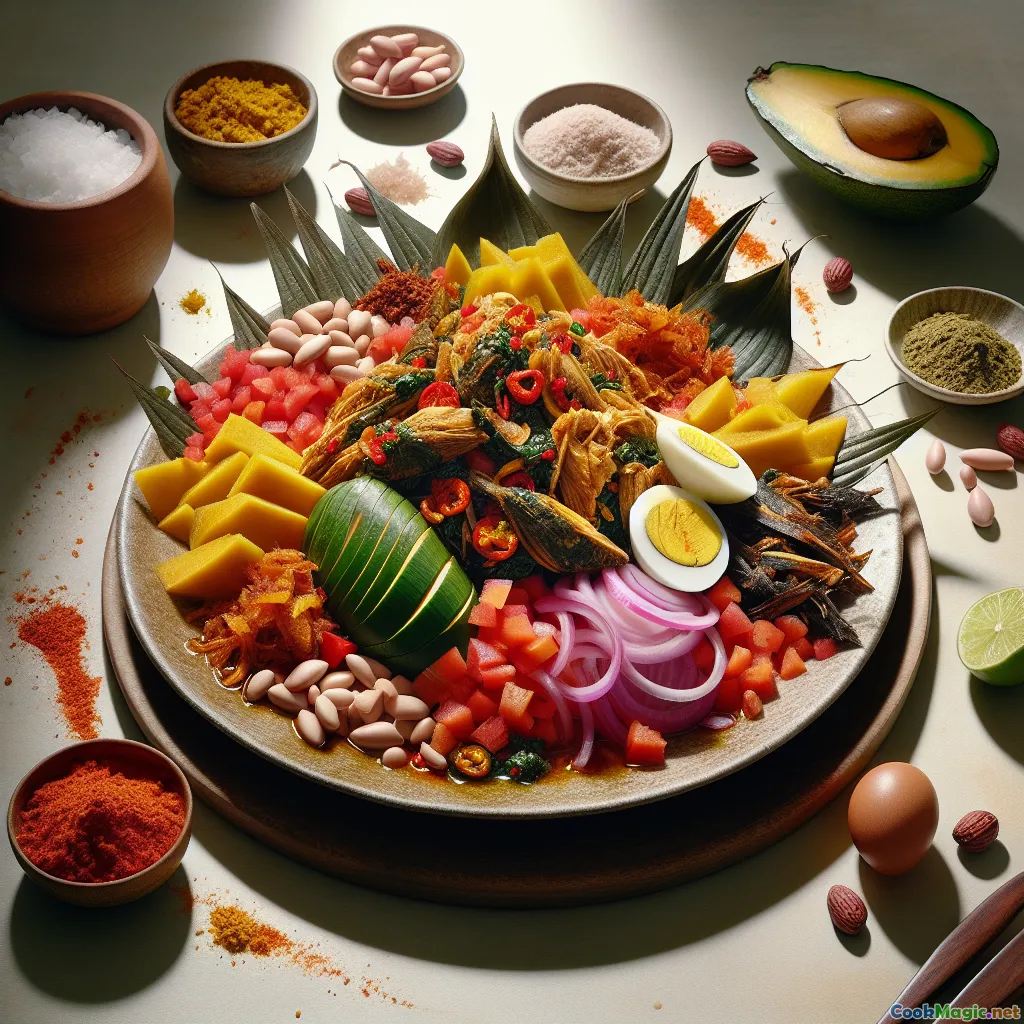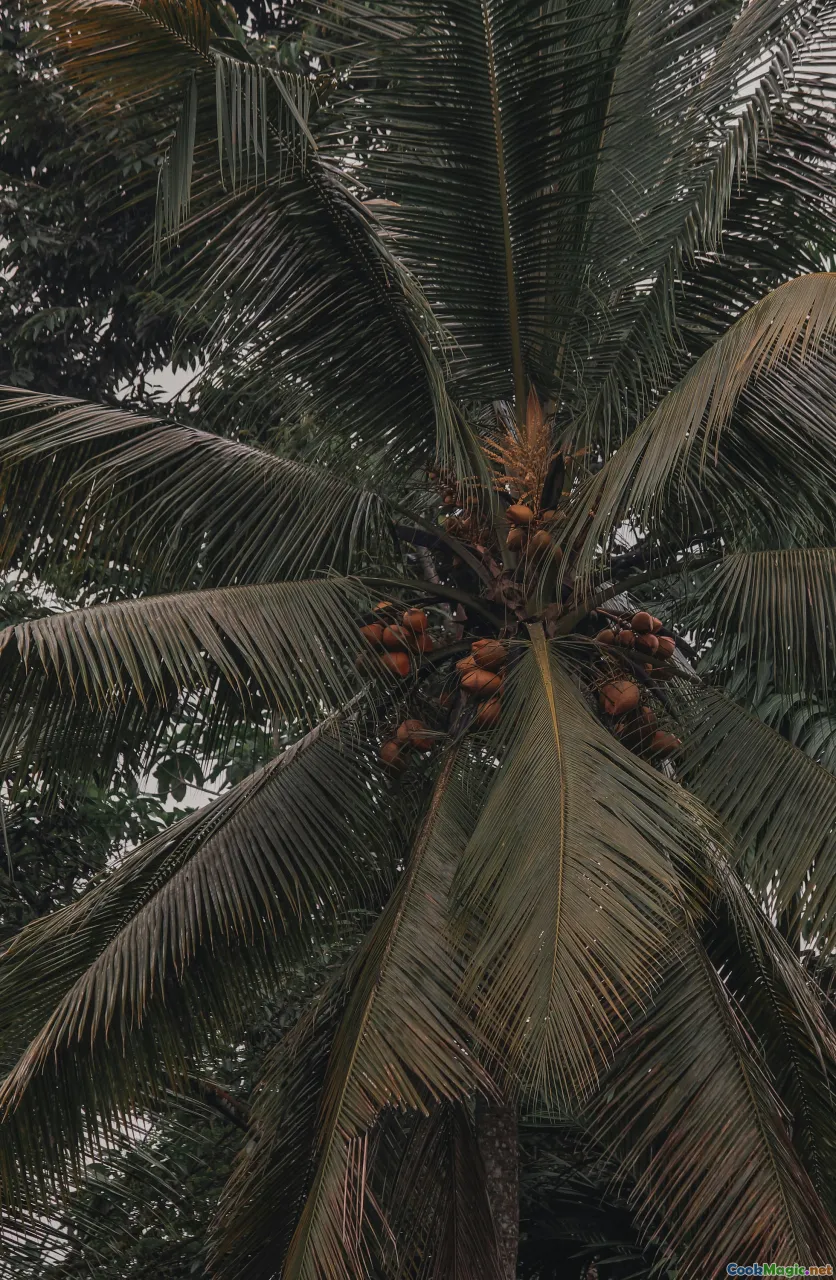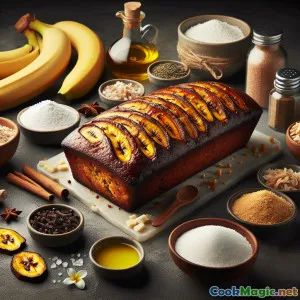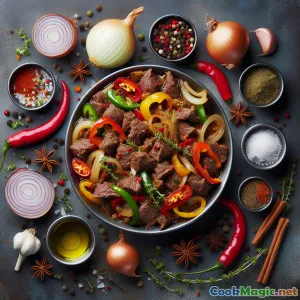
Kontomire Palava 랩과 플랜틴 플랫브레드
(Kontomire Palava Wraps with Plantain Flatbreads)
(0 리뷰)재료
-
300 grams 타로 잎(kontomire), 줄기 제거 및 세척
(Blanch or steam; substitute spinach or kale if unavailable)
-
3 tbsp 레드 팜 오일
(Traditional flavor and color)
-
1 medium 양파, 잘게 다진 것
(White or red onion works)
-
2 medium 다진 토마토
(Ripe, juicy tomatoes)
-
1 small 씨 제거 후 다진 스코치 보넷 고추
(Adjust heat to taste)
-
2 cloves 다진 마늘
(Fresh for best aroma)
-
1 tbsp 신선한 생강, 강판에 간 것
(온기와 깊이를 더하다)
-
0.5 cup 에구시 분말(멜론 씨앗)
(Lightly toasted enhances nuttiness)
-
150 grams 훈제 고등어, 잘게 부서진 살
(Or smoked turkey or mushrooms for vegetarian)
-
1 tbsp 건새우 가루
(Umami booster)
-
1 tsp 소금
(Start with 1 tsp; adjust to taste)
-
1 piece 생선 또는 채소 육수 큐브
(Optional seasoning)
-
2 large 삶은 달걀, 얇게 썬 것
(Classic palava pairing)
-
250 ml 물
(Use as needed to loosen stew and dough)
-
2 large 익은 플랜테인, 껍질 벗긴
(Spotted skins = sweeter, softer flatbreads)
-
1 cup 카사바 가루(가리 또는 타피오카 전분)
(Add gradually until dough is workable)
-
2 tbsp 코코넛 오일(납작빵 굽기에 사용)
(Or neutral oil)
-
1 small 아보카도 슬라이스
(Creamy finish in the wrap)
-
2 tbsp 볶은 땅콩, 잘게 부순 것
(Crunchy garnish)
-
1 medium 라임, 조각으로 자른 것
(For squeezing over the filling)
(Blanch or steam; substitute spinach or kale if unavailable)
(Traditional flavor and color)
(White or red onion works)
(Ripe, juicy tomatoes)
(Adjust heat to taste)
(Fresh for best aroma)
(온기와 깊이를 더하다)
(Lightly toasted enhances nuttiness)
(Or smoked turkey or mushrooms for vegetarian)
(Umami booster)
(Start with 1 tsp; adjust to taste)
(Optional seasoning)
(Classic palava pairing)
(Use as needed to loosen stew and dough)
(Spotted skins = sweeter, softer flatbreads)
(Add gradually until dough is workable)
(Or neutral oil)
(Creamy finish in the wrap)
(Crunchy garnish)
(For squeezing over the filling)
영양 정보
- 인분: 4
- 1인분 크기: 1 wrap (250g)
- Calories: 540 kcal
- Carbohydrates: 0 g
- Protein: 22 g
- Fat: 24 g
- Fiber: 8 g
- Sugar: 12 g
- Sodium: 650 mg
- Cholesterol: 115 mg
- Calcium: 160 mg
- Iron: 4.5 mg
조리법
-
1 - Blanch and chop kontomire:
Bring a pot of water to a boil. Blanch cocoyam leaves for 2–3 minutes until soft. Drain, cool, squeeze out excess water, and chop finely.
-
2 - Toast the egusi:
In a dry skillet over medium heat, gently toast ground egusi until fragrant and lightly golden. Transfer to a bowl to prevent burning.
-
3 - Make plantain puree:
Blend or mash ripe plantains with a pinch of salt and 2–3 tbsp water until smooth and thick.
-
4 - Form flatbread dough:
Mix cassava flour into the plantain puree a little at a time until a soft, non-sticky dough forms. Rest 5 minutes.
-
5 - Cook plantain flatbreads:
Divide dough into 4 balls. Heat a slick of coconut oil in a skillet. Press each ball between oiled parchment to 18–20 cm rounds. Cook 2–3 minutes per side until golden and pliable. Cover to keep warm.
-
6 - Sauté aromatics in palm oil:
Warm palm oil over medium heat. Add onion, ginger, and garlic; cook until soft and sweet without browning.
-
7 - Add tomatoes and pepper:
Stir in diced tomatoes and scotch bonnet. Cook down until saucy and reduced, about 5–7 minutes. Season with a pinch of salt.
-
8 - Build the egusi body:
Sprinkle toasted egusi into the pan. Stir to form a thick, nutty paste. Add 60–120 ml water gradually to loosen to a spoonable stew.
-
9 - Fold in fish and seasonings:
Add flaked smoked mackerel and shrimp powder. Crumble in stock cube if using. Simmer gently 3–5 minutes to meld flavors.
-
10 - Finish with kontomire and eggs:
Fold in chopped kontomire and cook until tender and glossy, 2–3 minutes. Gently add sliced boiled eggs and warm through. Adjust salt.
-
11 - Assemble the Wraps:
Lay a warm flatbread on a board. Spoon palava filling down the center. Add avocado slices, a squeeze of lime, and crushed peanuts.
-
12 - Wrap and serve:
Fold sides in and roll tightly. Halve on the bias. Serve immediately while warm and juicy.
Bring a pot of water to a boil. Blanch cocoyam leaves for 2–3 minutes until soft. Drain, cool, squeeze out excess water, and chop finely.
In a dry skillet over medium heat, gently toast ground egusi until fragrant and lightly golden. Transfer to a bowl to prevent burning.
Blend or mash ripe plantains with a pinch of salt and 2–3 tbsp water until smooth and thick.
Mix cassava flour into the plantain puree a little at a time until a soft, non-sticky dough forms. Rest 5 minutes.
Divide dough into 4 balls. Heat a slick of coconut oil in a skillet. Press each ball between oiled parchment to 18–20 cm rounds. Cook 2–3 minutes per side until golden and pliable. Cover to keep warm.
Warm palm oil over medium heat. Add onion, ginger, and garlic; cook until soft and sweet without browning.
Stir in diced tomatoes and scotch bonnet. Cook down until saucy and reduced, about 5–7 minutes. Season with a pinch of salt.
Sprinkle toasted egusi into the pan. Stir to form a thick, nutty paste. Add 60–120 ml water gradually to loosen to a spoonable stew.
Add flaked smoked mackerel and shrimp powder. Crumble in stock cube if using. Simmer gently 3–5 minutes to meld flavors.
Fold in chopped kontomire and cook until tender and glossy, 2–3 minutes. Gently add sliced boiled eggs and warm through. Adjust salt.
Lay a warm flatbread on a board. Spoon palava filling down the center. Add avocado slices, a squeeze of lime, and crushed peanuts.
Fold sides in and roll tightly. Halve on the bias. Serve immediately while warm and juicy.
Kontomire Palava 랩과 플랜틴 플랫브레드 :에 대한 자세한 정보
Why you will love Kontomire Palava Wraps
Kontomire Palava Wraps marry the comfort of Ghana’s beloved palava sauce with the portability of a modern street-style wrap. Palava sauce—rich with cocoyam leaves (kontomire), egusi (melon seeds), palm oil, and often smoked fish—brims with savory depth, gentle heat, and a satisfying, nutty body. Here, the stew becomes a luscious filling nestled inside tender plantain-cassava flatbreads. The result is handheld nourishment: juicy, fragrant, and deeply rooted in tradition, yet designed for today’s on-the-go appetites.
A short story and cultural thread
In Ghana, kontomire is more than just greens; it’s a staple of everyday cooking, connecting home gardens, market days, and communal meals. Palava sauce (sometimes called kontomire stew) appears across tables alongside banku, fufu, or rice. Its name hints at lively discussion—some say it references the talk that erupts when a pot of palava is bubbling, or perhaps the spirited mix of ingredients inside. By translating this stew into wraps, we preserve its unmistakable identity while giving it a playful, approachable format perfect for picnics, lunch boxes, or a crowd-pleasing dinner spread.
Ingredient spotlight
- Kontomire (cocoyam leaves): Earthy, mineral-rich leaves that soften into silky strands. If unavailable, spinach or tender kale makes a good stand-in.
- Egusi (melon seeds): Ground seeds that thicken the stew and lend buttery, nutty richness. Light toasting coaxes out deeper aroma.
- Red palm oil: The heart of the flavor and color. It infuses the stew with a sunset hue and subtle palm-fruit sweetness.
- Smoked fish: Traditional mackerel adds briny smokiness. For a vegetarian version, try smoked mushrooms or skip it entirely and lean on shrimp powder alternatives or extra umami from soy-free seasonings.
- Plantain-cassava flatbreads: Naturally gluten-free, slightly sweet, and incredibly pliable, they echo West African staples while functioning like tortillas.
Technique notes and tips
- Blanching the greens: A quick blanch removes any chalky edge and sets the color. Squeeze out water so the stew stays rich, not diluted.
- Egusi control: Sprinkle the toasted egusi gradually and stir. If you want a thicker, scrambled texture, add it to hot oil; for a smoother, saucier finish, whisk it into a little water first before stirring into the pan.
- Oil balance: Palm oil is essential here, but if you prefer lighter results, use a bit less and finish with a drizzle for aroma.
- Flatbread flexibility: Cassava flour absorbs differently. Add just enough to form a soft, workable dough that presses without cracking. Keep the cooked flatbreads covered to stay supple.
Substitutions and variations
- Greens: Spinach, kale, or even chard stand in for kontomire when needed.
- Protein: Swap smoked mackerel with smoked turkey, grilled mushrooms, seared tofu, or chickpeas.
- Heat level: Scotch bonnet is classic. Reduce seeds for mild heat or use a milder chili. Add heat at the table with shito or chili oil.
- Toppings: Avocado adds creaminess; crushed peanuts add crunch. Pickled onions, grilled plantain coins, or a sprinkle of suya spice are all fantastic.
Make-ahead and storage
- The palava filling keeps 3–4 days in the fridge. Rewarm gently to maintain the egusi’s creamy texture.
- Flatbreads are best fresh, but you can make them a few hours ahead. Keep wrapped in a towel; reheat briefly in a dry skillet to soften.
- Assemble wraps just before serving so they don’t steam and soften too much.
Serving suggestions
Serve with a crisp slaw of cabbage, carrots, and lime for brightness. A side of chilled hibiscus tea (sobolo) or ginger beer pairs beautifully with the stew’s warmth and the plantain’s gentle sweetness.
Nutrition and balance
Each wrap balances carbohydrate energy from plantain and cassava with protein from eggs and fish and fiber from greens. The red palm oil provides carotenoids and healthy fats; use the amount that matches your dietary needs.
What makes it unique
These wraps keep the soul of palava intact—nutty egusi, silky greens, and smoky notes—while presenting it in a playful, portable shape. The plantain-cassava flatbread is the secret weapon: subtly sweet, naturally gluten-free, and a flavor match for the stew. It’s a delicious bridge between tradition and innovation, proof that classic recipes can adapt without losing their roots.
Enjoy the first bite: warm, fragrant, softly chewy flatbread giving way to savory, nutty, gently spicy stew—familiar comfort in a brand-new form.


















